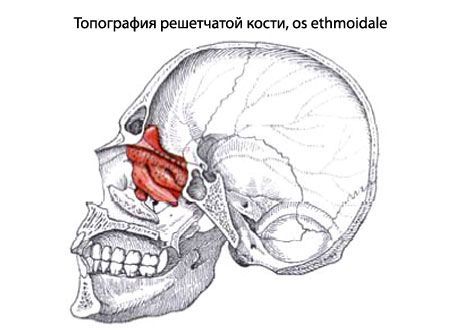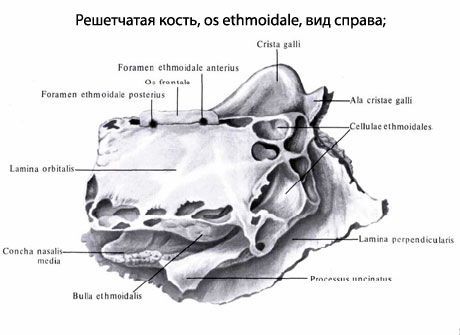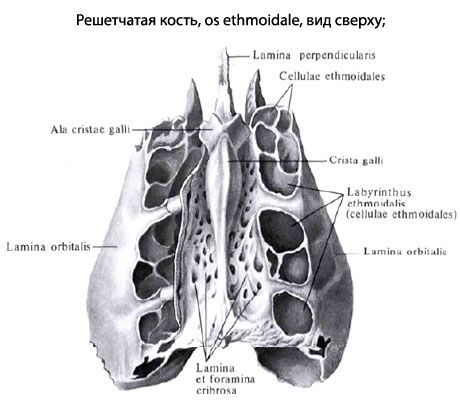Ethmoid bone
Last reviewed: 23.04.2024

All iLive content is medically reviewed or fact checked to ensure as much factual accuracy as possible.
We have strict sourcing guidelines and only link to reputable media sites, academic research institutions and, whenever possible, medically peer reviewed studies. Note that the numbers in parentheses ([1], [2], etc.) are clickable links to these studies.
If you feel that any of our content is inaccurate, out-of-date, or otherwise questionable, please select it and press Ctrl + Enter.
Latticed bone (os ethmoidalis) is part of the facial skull, forming together with other bones the walls of the nasal cavity and orbit. The latticed bone distinguishes horizontally located trellis plate, from which a perpendicular plate departs downwards into the nasal cavity. On the sides, to the right and left of the perpendicular plate, there are lattice labyrinths.

Lattica lamina (lamina cribrosa), occupying the upper part of the eponymous bone, has numerous openings for the fibers of the olfactory nerve. A cockscomb (crista galli) protrudes above the trellis plate along the median line. Ahead of the ridge is a blind hole, in the formation of which the frontal bone participates.
The perpendicular plate (lamina perpendicularis), located in the sagittal plane, participates in the formation of the upper part of the septum of the nose.
The labyrinthitis ethmoidalis is attached to the perpendicular plate at the top right and left. The labyrinth is formed by air-filled bone lattice cells (cellulae ethmoidales). On the medial side of the latticed labyrinth there are curved bone plates - the upper and middle nasal concha (conchae nasales superior et media). Due to these shells, the surface of the mucous membrane covering them increases.

Between the upper and middle shells is a narrow upper nasal passage (meatus nasi superior), and under the middle nasal shell is the middle nasal passage (meatus nasi medius). From the middle nasal shell, the lateral curved, hook-shaped process (processus uncinatus) departs downward. Behind this process, a lattice vesicle (bulla ethmoidalis) protrudes from the wall of the middle nasal conch in the middle nasal passage.

Between the hook appendage in front and the lattice vesicle behind it is a depression - a lattice funnel (infundibulum ethmoidale) leading to the forehead of the frontal sinus. The semilunar cleft (hiatus semilunaris), leading into the axillary sinus of the maxillary bones, lies down and down from the trellis vesicle. The lateral surface of the latticed labyrinth is smooth. It participates in the formation of the medial wall of the orbit and is called the orbital plate (lamina orbitalis).
How to examine?


 [
[